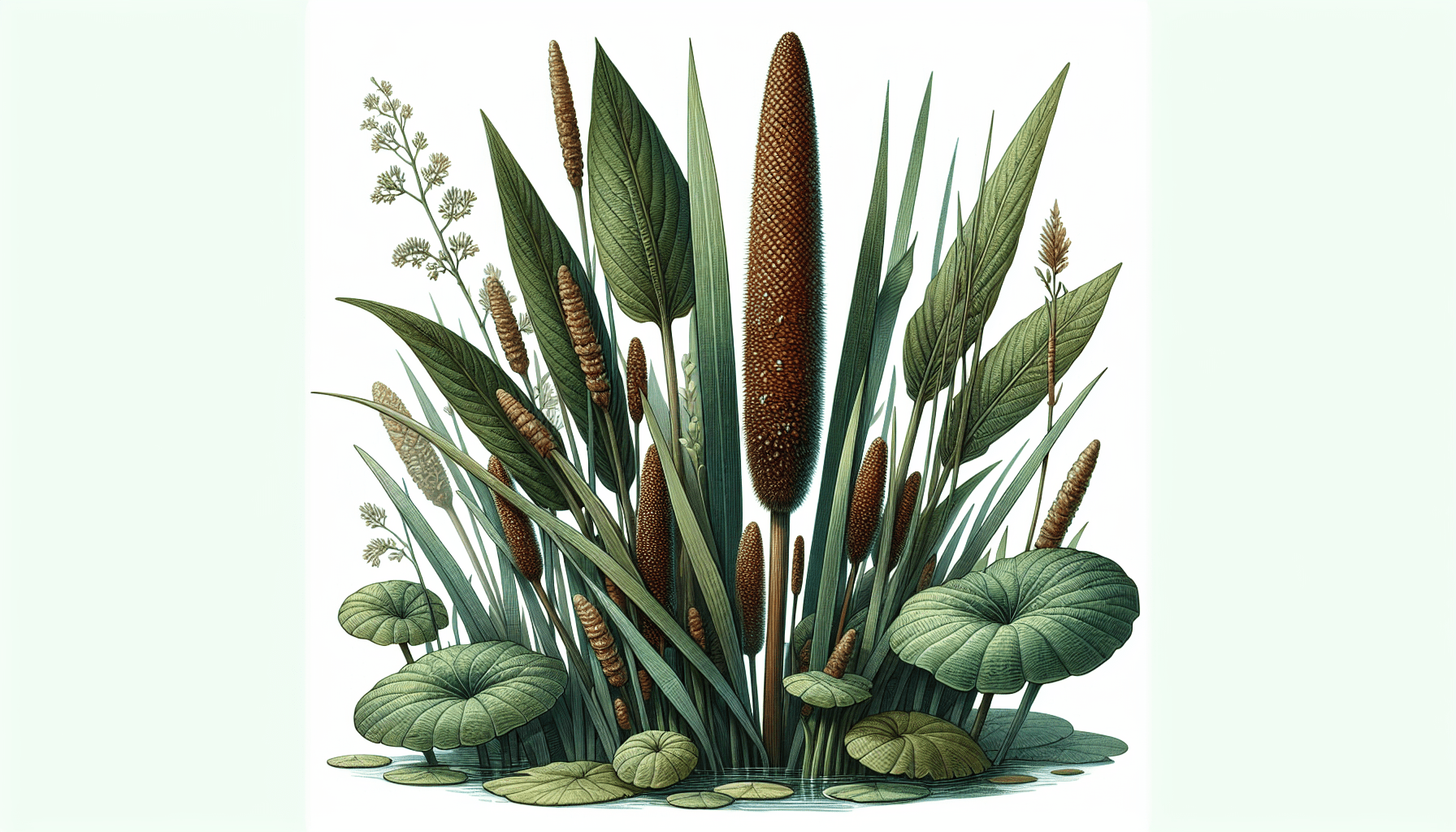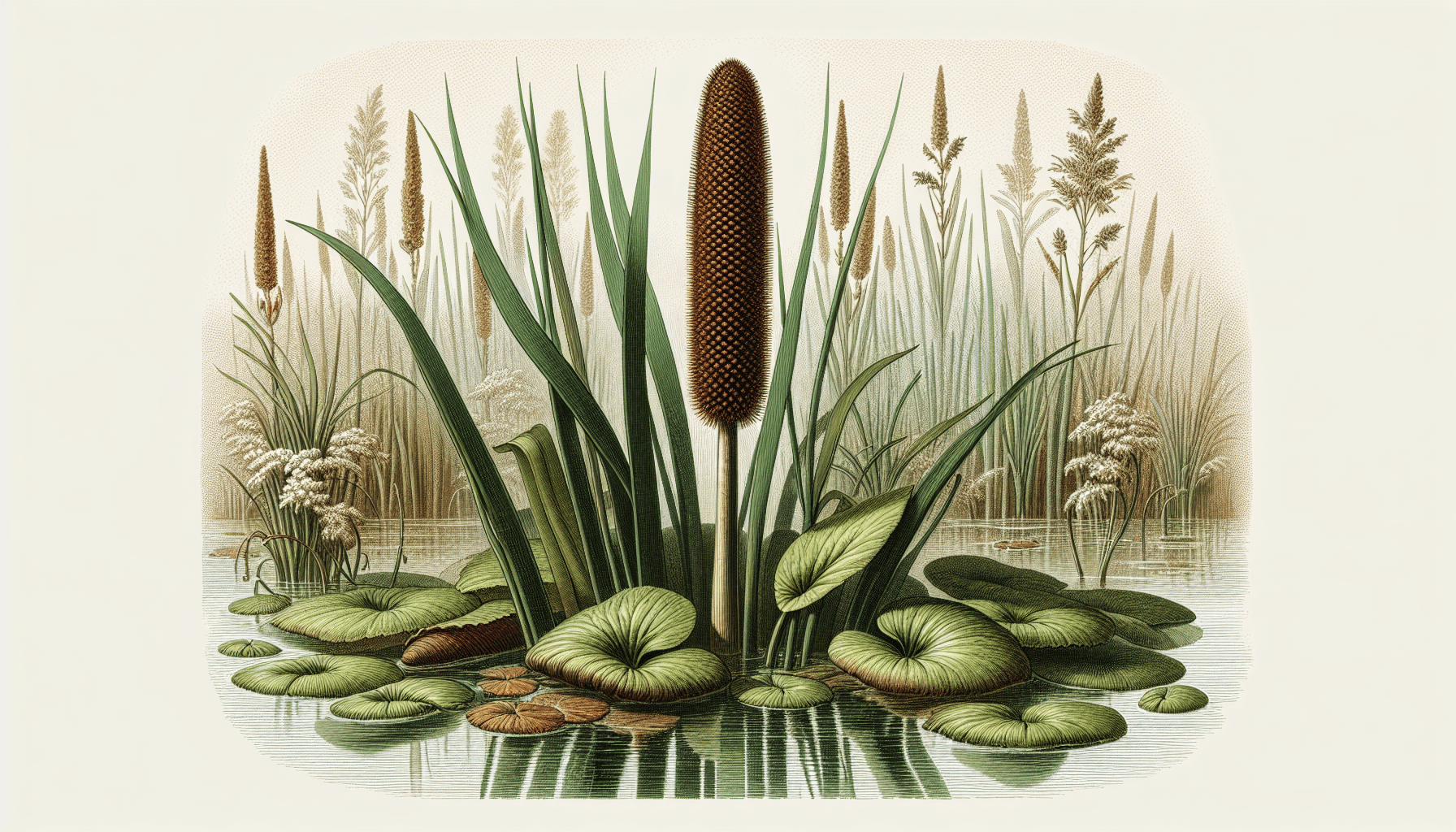In the realm of aquatic botany, unique species often bear the flag of interest for scholars, one such specimen being Typha Przewalskii. This scholarly examination delves deep into the biology, environmental importance, and potential uses of Typha Przewalskii to provide you with an extensive comprehension of this aquatic weed. Your understanding of this aquatic species would enhance significantly as you journey through its lifecycle, habitat preferences, and the symbiotic relationships it manifests in its watery dwelling.

Overview of Aquatic Weeds
General description of aquatic weeds
Aquatic weeds, as the name suggests, are plant species that predominantly grow in water bodies. These plants possess unique structural adaptations that allow them to survive and thrive in an aquatic environment. They are typically found in lakes, ponds, rivers, and other water bodies. Like their terrestrial counterparts, aquatic weeds can be native or non-native, and while some are beneficial to the ecosystem, others can be invasive, causing harm to local biodiversity and ecosystem functioning.
The importance of aquatic weeds in the ecosystem
Aquatic weeds play a crucial role in aquatic ecosystems. They provide food, shelter, and breeding habitats for aquatic and semi-aquatic organisms, including invertebrates, fish, birds, and mammals. Moreover, aquatic weeds are instrumental in oxygenating water, reducing erosion by anchoring soil with their roots, and improving water clarity by absorbing excess nutrients, which might otherwise cause harmful algal blooms. They also contribute to organic matter content in aquatic systems, fueling detritus-based food webs.
The negative impacts of aquatic weeds
While aquatic weeds are pivotal to the ecosystem, they may become problematic when they grow excessively or when invasive species enter a new habitat. Aquatic weeds can block waterways, impede navigation, alter water chemistry, reduce the aesthetic value of water bodies, and interfere with recreational activities such as fishing, boating, and swimming. Severe infestations can also cause local species loss, impact commercial fishing, and alter entire ecosystems.
Definition of Typha Przewalskii
Scientific classification of Typha Przewalskii
Typha Przewalskii belongs to the Typhaceae family, commonly known as cattails or bulrushes. The genus Typha includes around 30 species of perennial herbaceous flowering plants. Typha Przewalskii, specifically, is one of these species that has been identified by botanists.
Characteristics and morphology of Typha Przewalskii
Typha Przewalskii, like other members of its genus, is characterized by its tall, slender, and reed-like form. Its leaves are simple, alternate, and linear, with a sheathing base. The plant produces a typical cylindrical inflorescence, with a brownish spike consisting of numerous tiny flowers. The upper part of the spike comprises male flowers while the lower part is composed of female flowers. This arrangement facilitates pollination by wind, a common strategy in aquatic and marshy habitats.
Distribution and Habitat
Geographical distribution of Typha Przewalskii
Typha Przewalskii is found in various parts of the world. Its geographical distribution spans several continents, including areas within Europe, Asia, and North America. Its prevalence in diverse climatic zones attests to its adaptability and hardiness.
Habitat preferences of Typha Przewalskii
The preferred habitats of Typha Przewalskii are the shallow margins of freshwater bodies, including lakes, ponds, and slow-moving rivers. It can also be found in marshes, wetlands, and damp soil in riparian zones. This plant species is tolerant to various water conditions, from stagnant to flowing and from fresh to moderately brackish.
Adaptive features of Typha Przewalskii to its habitat
Typha Przewalskii exhibits several adaptive features that contribute to its success in aquatic environments. Its tall and slender form helps it reach above the water surface for light and air. The plant’s root system anchors it firmly in the soft, water-logged soil. It is also equipped with a rhizome system, enabling it to spread and colonize rapidly in suitable conditions.

Growth and Development
Growth requirements of Typha Przewalskii
Typha Przewalskii requires full sunlight for optimal growth. It thrives in a wide range of soil types, as long as they are permanently inundated or saturated. The plant can tolerate some water level fluctuation, but it is less productive in dry conditions. It needs ample nutrient supply, particularly nitrogen and phosphorous, to support its rapid growth.
Stages of growth and development
Typha Przewalskii follows a typical growth pattern, starting from seed germination followed by seedling establishment, vegetative growth, flowering, and seed set. The rapid growth phase coincides with warmer months, while the plant becomes dormant during colder periods.
Factors affecting growth and development
The growth and development of Typha Przewalskii are influenced by several factors. Light availability, water depth, and nutrient status of the substrate are critical. The presence of other plant species may also affect its growth via competition or facilitation. Changes in these environmental variables can impact the plant’s vigour, growth rate, and reproduction.
Reproduction and Propagation
Sexual reproduction process of Typha Przewalskii
Sexual reproduction in Typha Przewalskii involves the production of flowers and seeds. The plant produces unisexual flowers arranged in a cylinder-shaped inflorescence. The male flowers release pollen, which is carried by the wind to the female flowers. Following successful pollination, seeds are formed.
Asexual reproduction methods
In addition to sexual reproduction, Typha Przewalskii also propagates asexually through its rhizomes. This method allows the plant to colonize vast areas quickly, particularly in disturbed habitats.
Seeds and dispersal mechanisms
The tiny seeds of Typha Przewalskii are borne within the cylindrical inflorescence. When mature, the inflorescence disintegrates, releasing the seeds into the water. The seeds float on the water surface and are dispersed by water currents, hence reaching new colonization sites.
Ecological Role and Importance
Role of Typha Przewalskii in the ecosystem
Typha Przewalskii plays a pivotal role in the ecosystem. It provides shelter and nesting grounds for several birds and habitat for aquatic invertebrates. The plant also aids in water filtration by absorbing excess nutrients. Its above-ground biomass provides organic matter, contributing to the detritus food web.
Benefits to wildlife and aquatic life
Typha Przewalskii, with its dense stands, provides an ideal habitat for numerous aquatic and semi-aquatic organisms. Birds, insects, and reptiles find refuge and breeding ground among these plants. The plant itself serves as food for various herbivores.
Contribution to water and soil quality
By absorbing excess nutrients, particulate matter, and pollutants, Typha Przewalskii helps to purify water bodies, enhancing water and soil quality. Moreover, its rooting system helps to stabilize soil and prevent erosion.
Effects of Typha Przewalskii as an invasive species
Impacts on biodiversity
While it can significantly contribute to an ecosystem, Typha Przewalskii, when uncontrolled, may negatively impact biodiversity. It outcompetes native species for resources, leading to a loss of plant diversity and changes in animal composition.
Effects on waterways and navigation
The fast rate of growth and colonization of Typha Przewalskii can lead to blockage of waterways, hampering navigation and other water-based activities. It can also impact hydrological functioning by altering water flow patterns.
Economic consequences of invasion
The impact of Typha Przewalskii invasion extends beyond ecological consequences. Control and management of this invasive plant can be costly, thereby imposing an economic burden. Additionally, interference with navigation, fishing, and other uses of water bodies can lead to economic losses.
Control and Management
Manual and mechanical control methods
Manual and mechanical control methods, such as hand-pulling and mowing, can be effectively used to manage small populations of Typha Przewalskii. However, these methods can be laborious and might not be feasible for large infestations.
Chemical control options
Herbicides can be employed to control Typha Przewalskii. These chemicals should be selectively used considering their potential non-target effects and environmental impacts. Regular monitoring is essential to assess the effectiveness and environmental safety of these control measures.
Biological control measures
Biological control involves the use of natural enemies, such as insects, pathogens, or herbivores, to control the invasive plant. Research is needed to identify potential biocontrol agents for Typha Przewalskii and to assess their effectiveness, specificity, and safety.
Uses of Typha Przewalskii
Ethnobotanical uses
Typha Przewalskii has been employed for various purposes throughout human history. Parts of the plant can be used for basketry, thatching, and making other items. The plant has also been used as a food source, as it provides edible parts, such as young shoots and rhizomes.
Medical and pharmaceutical applications
Traditional medicinal uses of Typha Przewalskii have been documented. It has been used in treating a variety of ailments, including wounds, inflammation, and gastric problems. Further research could uncover pharmaceutical potential and validate these traditional uses scientifically.
Use in landscaping and horticulture
Typha Przewalskii can be effectively used in landscaping and horticulture, given its aesthetic appeal and habitat-forming capabilities. It can be planted in pond margins, constructed wetlands, and water gardens, where it serves a decorative purpose while enhancing biodiversity.
Research and Future Prospects
Current research on Typha Przewalskii
Research on Typha Przewalskii, to date, has been focused on understanding its ecological characteristics, impacts, and control methods. Studies have also begun investigating its phytochemical and pharmacological properties.
Potential future uses and applications
The future holds significant potential for Typha Przewalskii. As a source of biomass, it could be harnessed for renewable energy production. Its efficient nutrient uptake makes it a candidate for wastewater treatment or bioremediation. Further research could also uncover new medicinal or industrial uses for the plant.
Conservation and sustainable management efforts
Given the ecological significance and potential economic value of Typha Przewalskii, conservation and sustainable management efforts are crucial. This entails balancing its positive contributions to aquatic ecosystems with the need to control its invasive tendencies. Active research, monitoring, and management are critical to the adaptive governance of this aquatic weed.